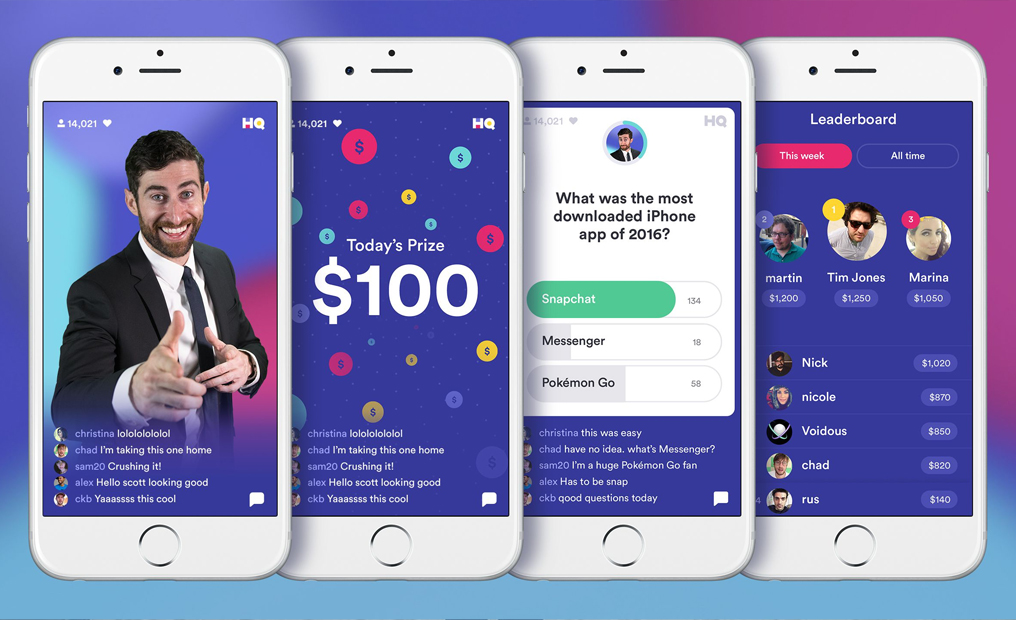Out-smarting
the system
The Seed Is Planted: TessOCR
In my Freshman year of college, I was introduced to the popular
game HQ Trivia, a live quiz show used by millions of people daily
that pays users who get 12/12 questions correctly. Each question
is typically something obscure and you have 10 seconds to choose
from 3 options. A week later, I decided to try and beat it.
Disclaimer: I in no way endorse cheating, I created the application
as an experiment and a proof of concept.
It was a Thursday night and I had just gotten back from having
classes from 8am to 6pm, and I was exhausted. Shortly thereafter, HQ
Trivia's show went live and I opened it up. I am by no means a
jeopardy god, but while playing the game, I realized that there was
a way I could beat it. I'd beat it with Java.
I immediately got to work designing a Java application I called
TessOCR. The premise was fairly simple. Using a Java wrapper on the
Open Source Tesseract library, I was able to write an application
that used Optical Character Recognition (OCR) on a user defined
portion of the screen. Upon detecting the text, the application
would automatically use Google to find the result. Thanks to
Quicktime, I could render my phone screen on my laptop and then use
OCR on that. In order to detect the portion of the screen to use,
Tess runs as a semi-transparent white overlay (10% opaque so quite
see-through) on the left half of the screen. By putting Quicktime on
that half, I could click two points on the white overlay to define
the "Active Area" which would persist until closing the application.
Hitting the space key triggers capturing a BufferedImage of the
"Active Area" and uses Tesseract to detect the text and Google to
find the result within a couple seconds, bringing up a page that
displayed the relevant results with the answer choices highlighted
on the page for easy viewing.
I tested my application first with screenshots from old games, and
then with youtube videos of them. I then tested it by spectating
live on the quiz shows and with it was able to find the answers for
10 or 11 out of 12 questions fairly consistently, meaning
potentially winning $1-5 per game per day.
OCR is
lame
The New And Improved: HolmesQ
First, OCR is kind of terrible. Tesseract is more or less ancient,
and while it is an impressive piece of technology, it ultimately
is prone to error and a bit slow for accurate results. Enter the
web socket.
If data was being streamed to my phone live with questions and
answers, then theoretically that data could be intercepted. This is
what I set out to do. First, using mitmproxy, I acted as MITM
(Man-In-The-Middle) with my phone and the internet and opened the
app. Immediately I was able to read a very curious piece of JSON
that was sent when the game was offline. The interesting part about
the JSON was this element called "broadcast" which was set to null.
My suspicion was then that if I queried the same URL during a live
game, setting the appropriate headers, I would receive JSON with a
"broadcast" object containing meaningful data. So, I started working
on a quick C++ application to do just that.
Sure enough, once I queried the HQ server, I received a "broadcast"
object containing a new piece of information, an interesting URL
which was referred to as the "socketURL". Familiar with the concept
of a web socket, I had a feeling I should connect to this live
broadcast socket and would receive relevant data streamed in an
alive connection. This is when I ran into the first problem:
connecting to a socket in C++ was a bit of a pain.
For most cases, this would be a point where you turn around and
start using a different language. However I was in a class where our
projects had to use a C++ framework, so my hands were tied. So, I
came up with a work around: writing cross-languages. I was familiar
with how to connect to a web socket in Swift, and since I am
developing on a Mac, I decided to write my program in multiple
languages. The primary application is written in C++, using an
Objective-C++ bridge to call a Swift web socket library where I
process the incoming data and send it back to the C++ code. Sure
enough, once I connected to the web socket, I was hit by a constant
stream of JSON data, way too fast to read everything. So, I wrote a
filter to only print out the incoming traffic that contained the
word "question" case-insensitive and I was now able to see questions
and answers, nicely packaged in JSON.
Next I created the interface to render the questions and answer
choices and connected everything to use various API's including the
google custom search and wikipedia. By doing basic statistical
analysis on all the results and some word processing on the
questions and answers, the bot was able to generate confidence
levels in each choice. This extended to being able to handle
negations and select which option doesn't apply in negated
questions.
This bot was capable of automatically detecting a live game,
entering the game pretending to be a real user, and then finding the
answer for each question in under a second.
